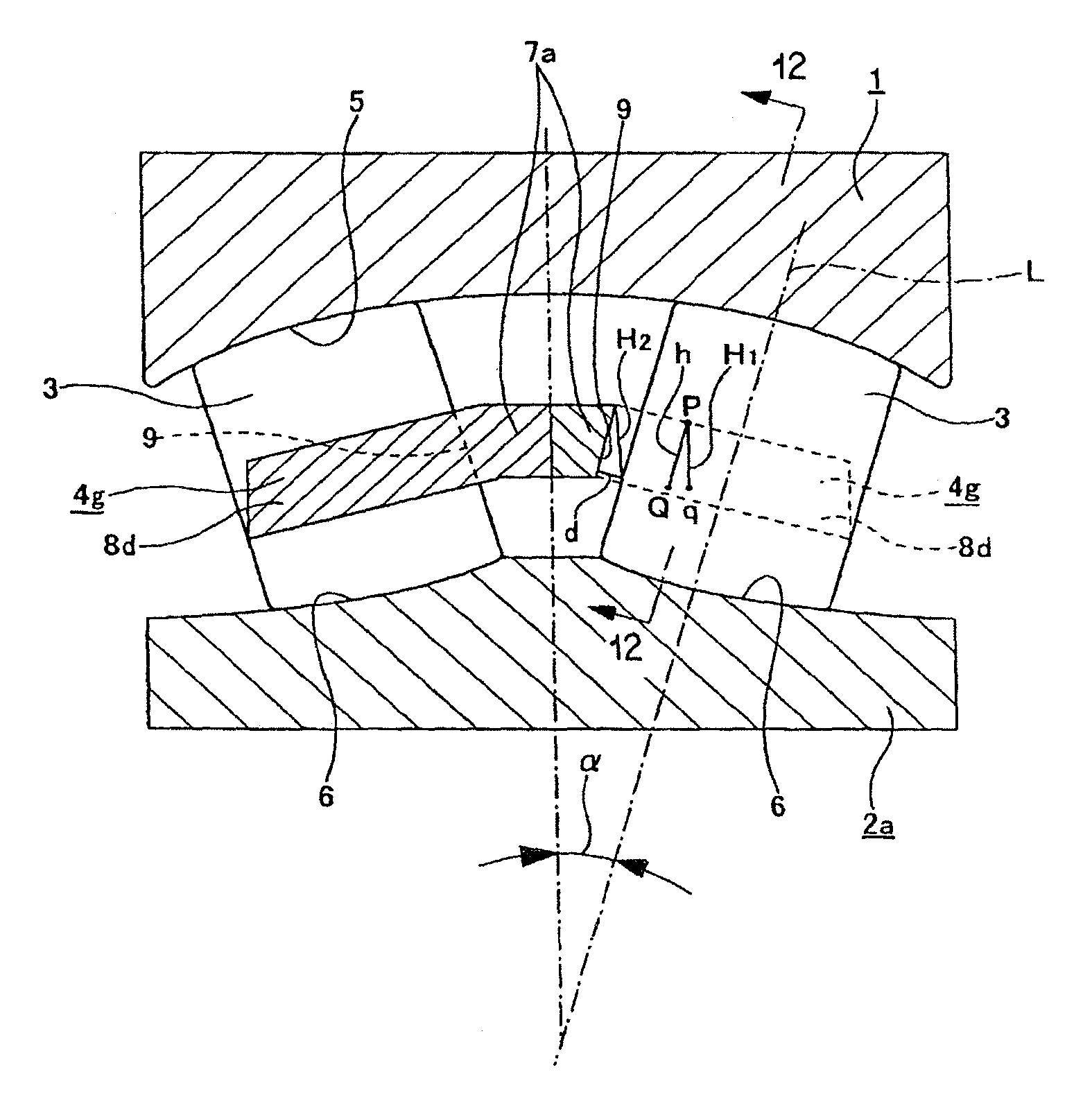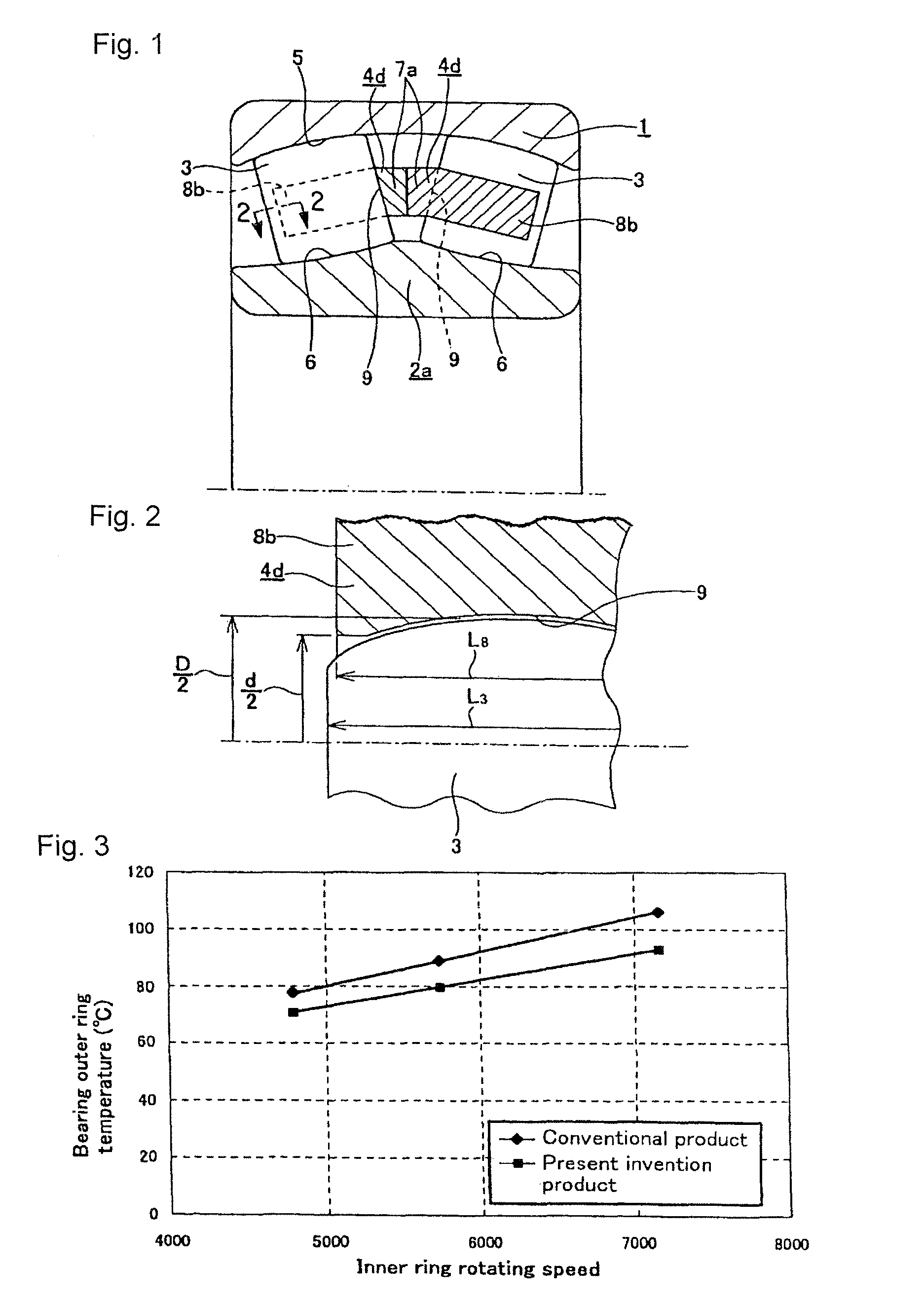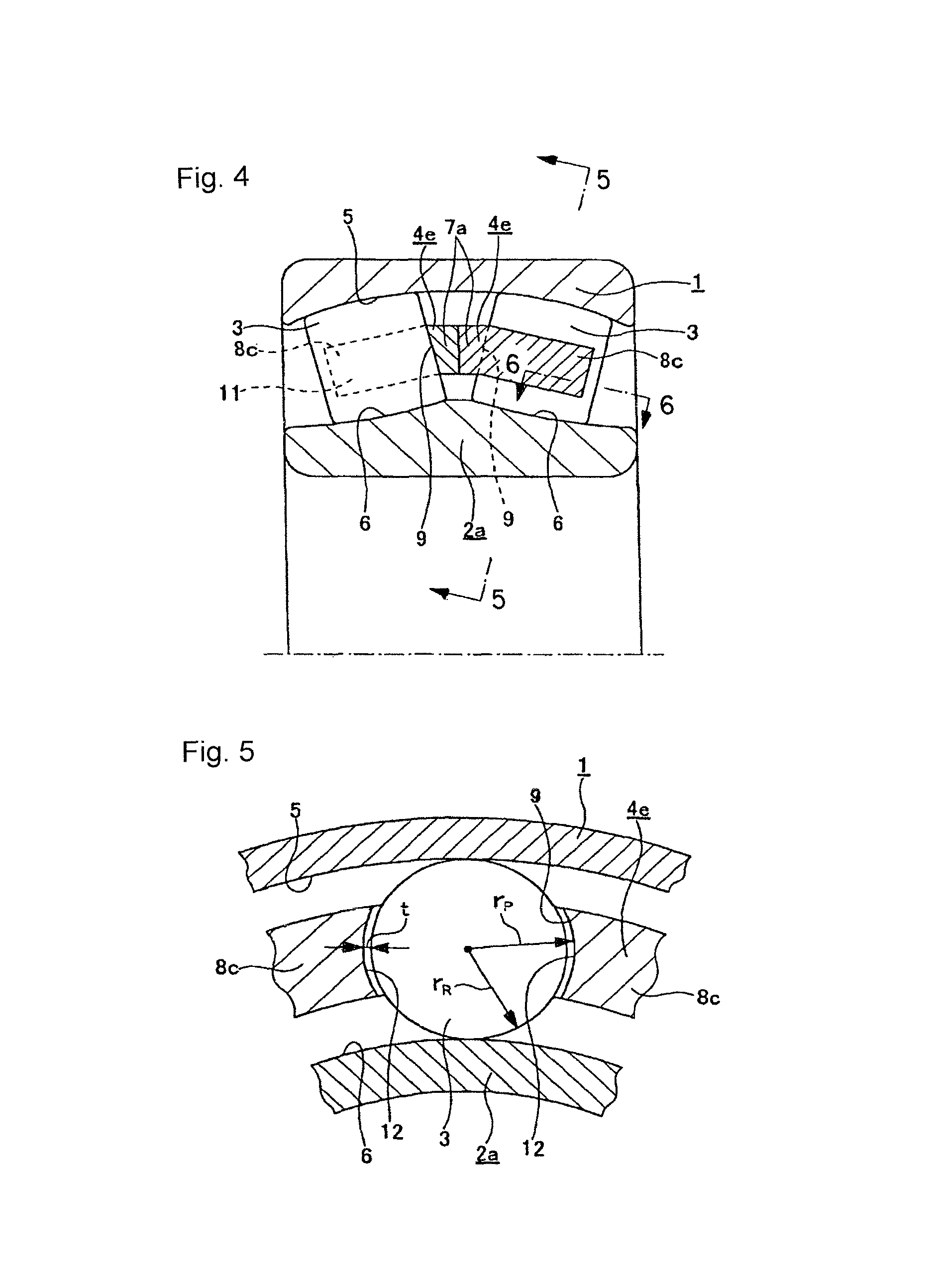Self-aligning roller bearing with retainer and manufacturing method for self-aligning roller bearing retainer
a technology manufacturing methods, which is applied in the direction of rolling contact bearings, shafts and bearings, rotary bearings, etc., can solve the problems of inconvenient processing of inner rings, low flow rate of lubricant (lubrication oil) entering the above space, and high speed operation, so as to prevent disengagement of spherical rollers, reduce the cost of self-aligning roller bearings with retainers and keep the cost of inner rings
- Summary
- Abstract
- Description
- Claims
- Application Information
AI Technical Summary
Benefits of technology
Problems solved by technology
Method used
Image
Examples
Embodiment Construction
First Example of the Embodiment
[0083]FIG. 1 to FIG. 2 show a first example of an embodiment of the present invention corresponding to a first aspect. A self-aligning roller bearing with a retainer of the present example comprises an outer ring 1, an inner ring 2a, a plurality of spherical rollers 3, and a pair of mutually independent (assembled rotatably with respect to one another) retainers 4d similar to the aforementioned second example of the conventional construction shown in FIG. 20.
[0084]The outer ring 1 has an inner peripheral surface upon which is formed a concave spherical outer raceway 5 having a single center.
[0085]Moreover, on an outer peripheral surface of the inner ring 2a a pair of inner raceways 6 are formed so as to oppose the above outer raceway 5. Unlike the case of the aforementioned second example of the conventional construction, there are no rib sections 10 (refer to FIG. 20) provided on both ends of the outer peripheral surface of this inner ring 2a. The inn...
PUM
 Login to View More
Login to View More Abstract
Description
Claims
Application Information
 Login to View More
Login to View More - R&D
- Intellectual Property
- Life Sciences
- Materials
- Tech Scout
- Unparalleled Data Quality
- Higher Quality Content
- 60% Fewer Hallucinations
Browse by: Latest US Patents, China's latest patents, Technical Efficacy Thesaurus, Application Domain, Technology Topic, Popular Technical Reports.
© 2025 PatSnap. All rights reserved.Legal|Privacy policy|Modern Slavery Act Transparency Statement|Sitemap|About US| Contact US: help@patsnap.com



